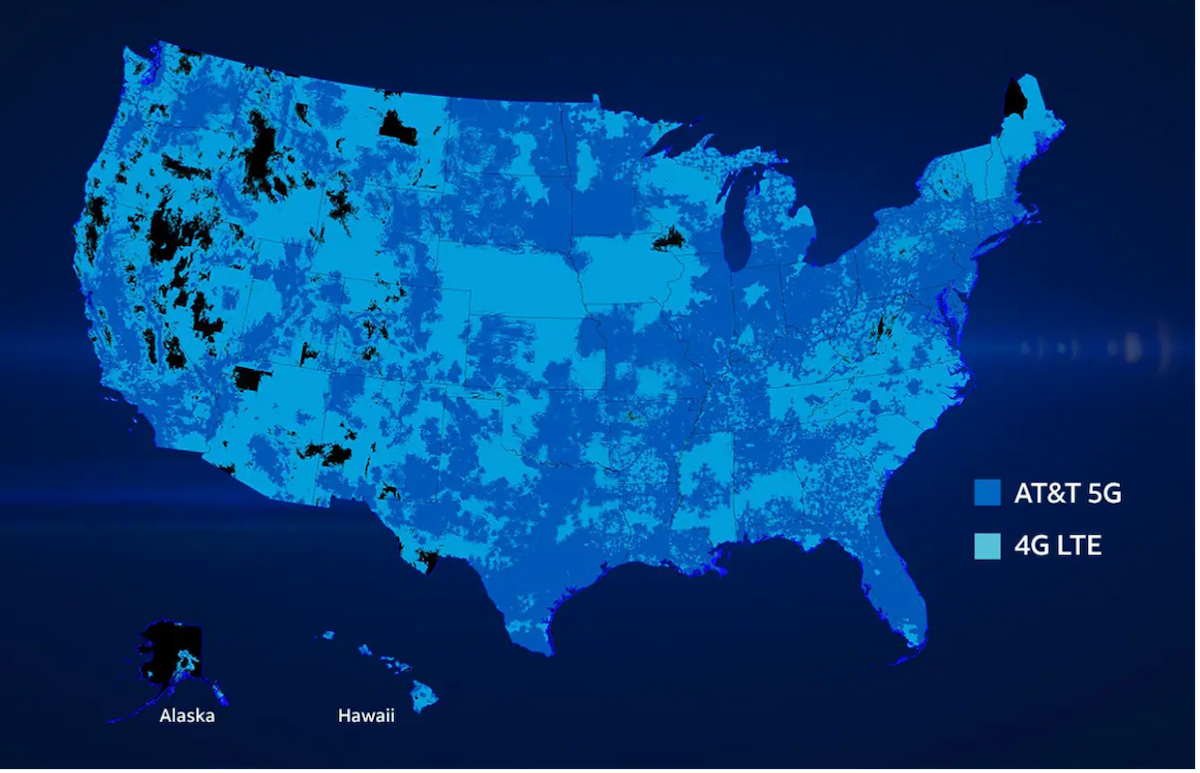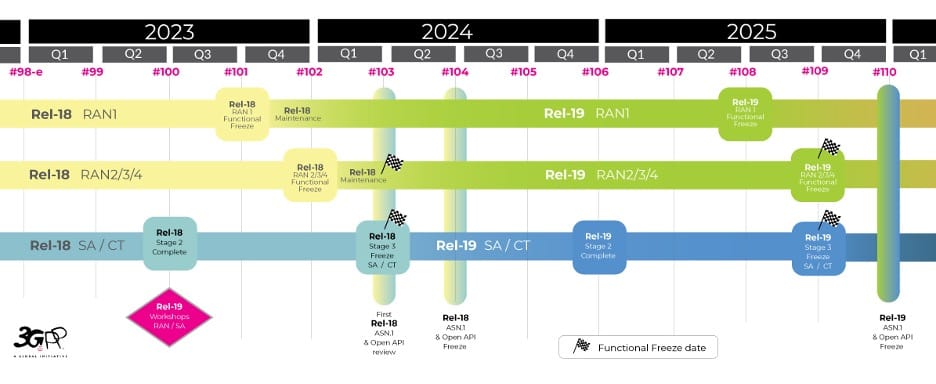
It might seem strange to think about 6G wireless technology.
After all, the world’s 5G wireless networks are still being built out.
It’s never an overnight process — one that’s always economic in nature.
Network infrastructure builds are expensive, and they get more expensive with each successive generation of wireless technology.
The reason for this is that new wireless technologies are deployed in higher radio frequency spectrum. It’s less congested than lower frequency bands, which is why it is the obvious choice.
Higher frequencies require higher power transmissions, resulting in more dense network infrastructure, hence the higher costs. But the new architectures do come with added benefits, such as increased speeds and lower latency (delay) for users of the network.
These technical benefits always enable new consumer and business applications that otherwise weren’t possible.
The simplest example is the jump from 3G to 4G, which enabled the kinds of business and consumer applications accessible using a smartphone. Just imagine what life would be like if our smartphones were all taken away…
Because of the network expense, the most population-dense metropolitan areas are targeted first, and the networks are built out from there.
Rural areas tend to be the last to see the latest wireless technology. And when they do, it usually means that the next generation is right around the corner.
5G technology is a perfect example of that.
5G was the first major leap into the gigahertz (GHz) bands for wireless telecommunications technology. And it enables gigabit-per-second (Gbps) speeds to our mobile devices.
I have great memories of traveling throughout the heartland of America in 2020 during the pandemic to research the status of 5G wireless networks.
Of course, the big cities like D.C., New York, Chicago, and Los Angeles already had some 5G coverage at that time. But I wanted to see what the networks were like in places like Sioux Falls, Indianapolis, Memphis, Little Rock, Cincinnati, and many other smaller cities.
The results were surprising to most.
I experienced 1 Gbps speeds in most locations, and also experienced coverage in buildings, and even inside of a historic bank in South Dakota with thick stone walls. Network coverage wasn’t ubiquitous back then, but 5G was there, and the performance was impressive.
Naturally, 5G coverage has improved dramatically since then. The maps of the major wireless carriers look quite similar. Below is AT&T’s map of 5G and 4G LTE coverage.

Coverage maps around the world tend to be similar in most developed countries that have rolled out 5G.
The exceptions tend to be smaller countries that have dense populations where the economics make sense to roll 5G out quickly to almost an entire population. Great examples are Japan, S. Korea, Taiwan, and Singapore.
Ironically, we haven’t yet seen the best of 5G. That might be a surprise, as it has been around for more than four years.
But what most don’t know is that the functionality of a wireless technology is released over a number of years.
The reason for this is that the technology needs to be standardized so that all members of the ecosystem are working off the same page. This is necessary, otherwise we’d end up with a mess… where some phones would only work in some countries or on some networks. They wouldn’t be interoperable.
It was actually like that in the late 90s, as there were competing standards and proprietary implementations of wireless technology. There was a period for a few years where I had 3 mobile phones — one for Japan, one for S. Korea, and one for the rest of the world. That was expensive and a major inconvenience.
The 3GPP (3rd Generation Partnership Project) is an industry consortium responsible for overseeing the development and maintenance of wireless standards. The first standard for 5G is known as Release 15, which was “frozen” back in June of 2018.
Currently active are three tracks of Release 18, and Release 19 which will be the final standards release, which will likely be finalized by 2026.

I know that might sound crazy, but the reality is that it takes a decade to develop and standardize the technology behind a single wireless technology generation. That’s why we’ve seen a new generation of wireless technology every 10 years.
The best way we can think about these “Releases” are as a rolling standardization process, with each release being a subset of the total standards for a single wireless technology.
This naturally begs the question… what happens after Release 19?
I hope you’ll be excited to know that the answer is 6G.
It may feel awkward for us to think about 6G when we’re still getting to know 5G.
But the planning for 6G has already started.
In fact, if it hadn’t, the industry wouldn’t be ready for early 6G deployments in 2030.

While the industry has been developing and experimenting with 6G technology for a few years now, it has been very early stage.
Things start to get serious this year, setting out the more specific requirements for 6G, and work on Release 20 — the first 6G-related standards release should begin towards the end of next year.
And that’s why there is already a battleground for 6G technology.
As we learned in Outer Limits — The World Just Barely Avoided a Doomsday, the rollout of 5G technology turned into a security nightmare and a geopolitical scuffle.
China-based companies Huawei and ZTE aggressively pushed their 5G equipment, specifically routing systems and base stations, at prices well below what Western telecommunications equipment giants Nokia Networks and Ericsson were able to provide.
Little did the world know that China’s government was eavesdropping on much of the world’s wireless telecommunications through Huawei’s and ZTE’s equipment. This is what led to the banning of equipment from these two vendors by a long list of countries.
So it was no surprise in February that 10 countries joined together and announced a set of principles regarding 6G standardization.
The United States, Japan, Finland, France, S. Korea, Sweden, United Kingdom, Czech Republic, Canada, and Australia agreed on principles that were largely centered around interoperability and security…
Security with respect to one particular country.
China’s intelligence “agents” are everywhere. It’s arguably the largest threat that most are completely blind to. And the Chinese government’s hands are deeply entwined with its global corporations.
Many critics have ignorantly claimed that the U.S. lost the battle on 5G technology to China. What they are referring to is system integration businesses related to 5G technology.
Other than Huawei and ZTE, the other two massive wireless systems integrators are Nokia Networks (Finland) and Ericsson (Sweden). Nokia and Ericsson are massive multi-national corporations with offices everywhere.
Nokia acquired Alcatel-Lucent back in 2015, and Alcatel acquired Lucent in 2006. Lucent was the U.S.-based telecommunications equipment company that was a spin out of Bell Laboratories from AT&T back in 1996. That was all U.S. technology.
What really happened was that U.S. companies intentionally shifted away from low-margin businesses like systems integration, base stations, and antennas, in order to focus on high-margin business like wireless semiconductors and intellectual property.
U.S. companies like Qualcomm, Broadcom, Skyworks, and Qorvo dominate the wireless semiconductor industry. They provide the most critical underlying technology, without which 4G or 5G wouldn’t exist. And ST Micro (France/Italy), Infineon (Germany), Nokia (Finland), and Ericsson (Sweden) are all major players, as well.
And all major technology players contribute to the standardization process and pool their respective patents to open the way for widespread deployments of each generation of wireless technology.
And yet, China wants to have a major influence over 6G standards.
Not only does it want to maintain “access” to the world’s telecommunications systems, it also wants to have standards that are beneficial to Huawei and ZTE as system integrators and equipment manufacturers.
5G and 6G technology are a matter of national security, as well as economic growth, which is why this particular battleground is so important.
As I said earlier, China’s “hands” are everywhere, which is why this battle for standardization is as much political, as it is technical. And aside from interoperable networks, network security is the most important aspect of 6G.
Which is why 10 nations joined together to put a stake in the ground to cooperate on 6G.
Technology standards are always a struggle with so many competing interests, usually driven by technology companies. This time around with 6G, national security interests will play a far larger role in wireless standards than ever before.
Tomorrow, we’ll have a closer look at 6G technology, and how it will differ from 5G today.
We always welcome your feedback. We read every email and address the most common comments and questions in the Friday AMA. Please write to us here.